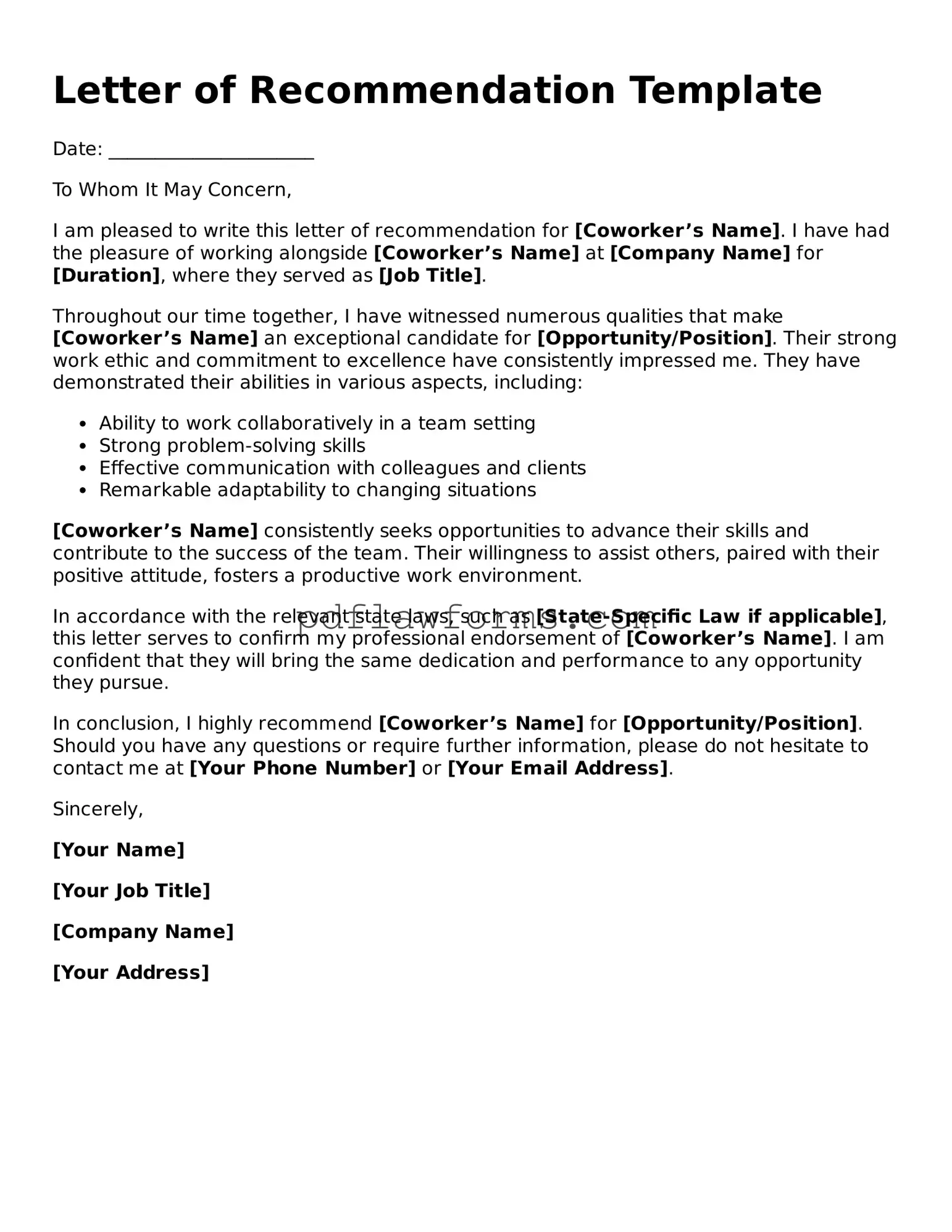Filling out a Letter of Recommendation for a coworker can be a meaningful task, yet it is not without its pitfalls. One common mistake is failing to personalize the letter. A generic recommendation lacks impact and does not highlight the unique qualities of the individual. Instead of using a one-size-fits-all template, take the time to reflect on specific experiences and contributions that showcase the coworker's strengths.
Another frequent error is being overly vague. When recommending someone, it is essential to provide concrete examples of their skills and achievements. Simply stating that a coworker is "hardworking" or "dedicated" does not convey the full picture. Instead, illustrate these traits with specific instances where they demonstrated exceptional performance or went above and beyond in their role.
Additionally, some people forget to mention relevant skills or experiences that align with the position the coworker is applying for. Tailoring the recommendation to the job description can significantly enhance its effectiveness. Highlight how the coworker's past roles and responsibilities have prepared them for the new opportunity. This approach not only strengthens the recommendation but also shows a deeper understanding of the coworker’s professional journey.
Another common mistake is using overly complex language or jargon. While it’s important to sound professional, clarity should always come first. A recommendation should be easily understood by anyone reading it. If the language is too technical or convoluted, the reader may miss the key points about the coworker’s qualifications.
Moreover, some individuals may inadvertently include negative comments or criticisms. Even if there are areas for improvement, a recommendation letter should focus on the positive attributes and contributions of the coworker. If there are concerns, it is better to address them in a private conversation rather than in a formal recommendation.
Another oversight is neglecting to proofread the letter. Typos and grammatical errors can undermine the credibility of the recommendation. Taking a moment to review the letter can ensure that it is polished and professional. A well-written letter reflects not only on the coworker but also on the recommender.
Finally, failing to include a closing statement can leave the letter feeling incomplete. A strong conclusion reiterates the recommender's support and encourages the reader to consider the coworker favorably. It’s an opportunity to leave a lasting impression and affirm the recommender’s confidence in the coworker’s abilities.
